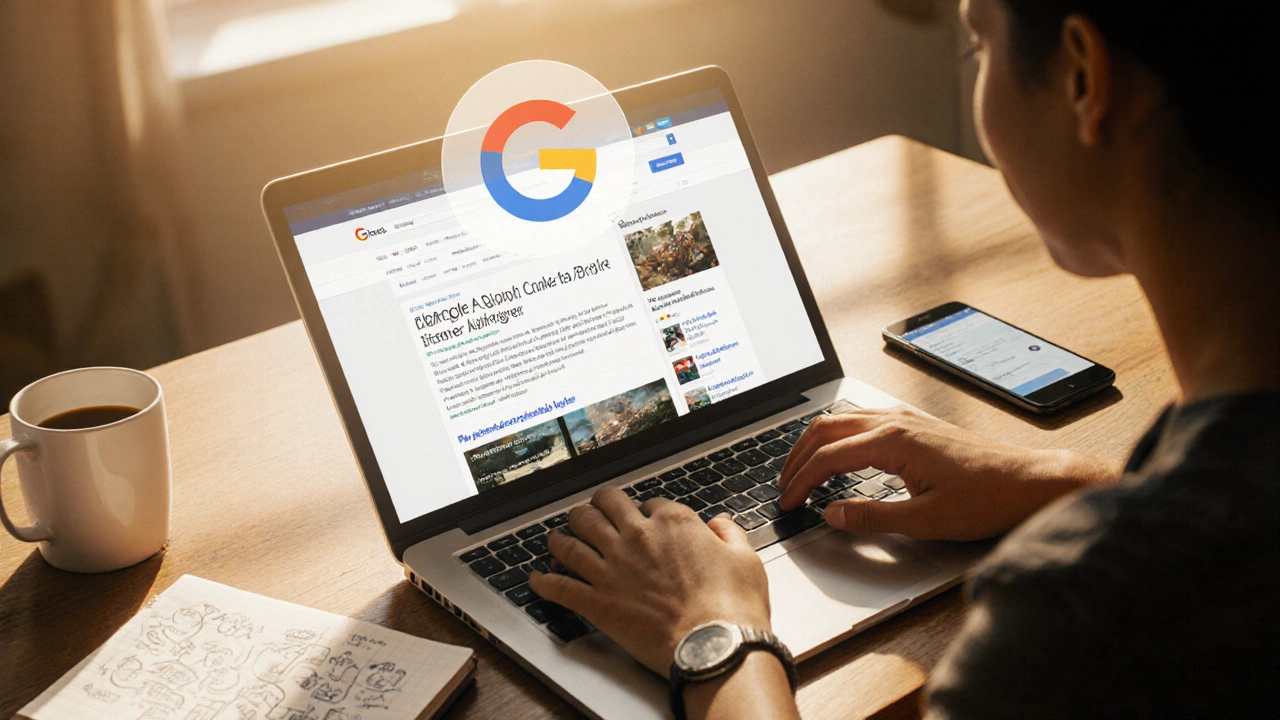Google PPC Earnings Calculator
Calculate Your Google PPC Earnings
Estimate potential revenue from Google Pay-Per-Click campaigns based on your blog traffic and cost-per-click rates.
Estimated Monthly Revenue
Based on 0 clicks at $0.00 CPC
Article reference: Average CPC for blog-related keywords ranges from $0.40 to $1.50 (2025)
Ever wondered if you can tap into Google’s massive ad network while you’re writing on a no‑cost platform? The short answer is yes, but the details matter. Below we break down how Google Pay‑Per‑Click works for free blogging sites, what you need to qualify, and the steps to get your first campaign rolling.
What is Google Pay‑Per‑Click?
Google Pay‑Per‑Click is a form of online advertising where you pay each time a user clicks on your ad. The platform behind it is Google Ads, formerly known as AdWords, and it lets advertisers bid on keywords that trigger ads in search results, on YouTube, or across the Google Display Network. Instead of paying for impressions, you only pay when someone actually visits your site, which makes it attractive for bloggers who want to control costs.
How Google Ads Works for Bloggers
When you create a Google Ads campaign, you choose a set of keywords relevant to your content. Google then runs an auction each time a user’s search query matches one of those keywords. The ad that wins the auction appears above or beside the organic results. Your cost per click (CPC) is determined by your maximum bid, the ad’s Quality Score, and the competition for that keyword.
For bloggers, the most valuable metrics are click‑through rate (CTR) and conversion rate. A high CTR means your ad copy and landing page resonate with readers, while a strong conversion rate translates clicks into newsletter sign‑ups, sales, or other goals.
Are Free Blogging Platforms Eligible for Google PPC?
Free blogging sites are online services that let you publish content without paying for hosting or a domain. Examples include Blogger, WordPress.com, Medium, and Tumblr. While they’re great for getting started, they come with restrictions that affect ad placement.
Google’s policy requires that the landing page you promote complies with its advertising standards. This includes having a clear navigation structure, a privacy policy, and no deceptive content. Many free platforms lock down the HTML and limit where you can insert ad code, which can block certain types of Google ads.
Below is a quick comparison of the most popular free blogging platforms and their compatibility with Google Pay‑Per‑Click campaigns.
| Platform | Native Ad Support | Can Run Google Ads | Typical CPC (USD) |
|---|---|---|---|
| Blogger | Built‑in AdSense integration | Yes - via AdSense or direct Ads | 0.50‑1.20 |
| WordPress.com (Free tier) | WordPress.com Ads (partner network) | Limited - only through partner ads | 0.30‑0.80 |
| Medium | Medium Partner Program (no external ads) | No - policies prohibit external ad code | N/A |
| Tumblr | Custom HTML allowed on paid plans only | Only on upgraded accounts | 0.40‑1.00 |

Step‑by‑Step: Setting Up a PPC Campaign on a Free Blog
Here’s a practical roadmap if you decide to go ahead on a platform that permits Google ads, such as Blogger.
- Create a Google Ads account. Sign up at ads.google.com using your existing Google account.
- Link to Google Analytics. This lets you track traffic, bounce rates, and conversions from ad clicks.
- Choose campaign type. For bloggers, the “Search” campaign is usually best because it captures intent‑based traffic.
- Define your keyword list. Use the Keyword Planner tool to find terms that have decent search volume but aren’t too expensive.
- Set budgets and bids. Start with a modest daily budget (e.g., $5‑$10) and a maximum CPC bid based on your keyword research.
- Write compelling ad copy. Mention the benefit of your post, include a call‑to‑action, and keep the headline under 30 characters.
- Configure landing page URL. Use the direct URL of the blog post you want to promote. Make sure the post is published, mobile‑friendly, and has a clear call‑to‑action.
- Review policy compliance. Google will scan the landing page. Ensure you have a privacy policy posted (most free platforms let you add it in the footer or an “About” page).
- Launch the campaign. After approval (usually within an hour), monitor performance daily and adjust bids or keywords as needed.
Common Pitfalls and How to Avoid Them
Even seasoned marketers stumble when they first try Google PPC on a free blog. Below are the most frequent issues and quick fixes.
- Low Quality Score. If Google rates your landing page poorly, you’ll pay more per click. Remedy: improve page load speed, add relevant headings, and ensure the content matches the ad’s keywords.
- Policy violations. Free platforms sometimes hide HTML tags that Google flags. Remedy: double‑check the Google Ads policies before publishing.
- Uncontrolled spend. New bloggers often set broad match keywords, causing irrelevant clicks. Remedy: start with exact or phrase match and use negative keywords to filter out unwanted traffic.
- Missing conversion tracking. Without it you can’t tell which clicks lead to newsletter sign‑ups or product sales. Remedy: add the Google Ads conversion tag via the blog’s HTML editor or through Google Analytics goals.

Alternatives to Google Pay‑Per‑Click for Free Bloggers
If Google’s restrictions feel too limiting, consider these other ways to monetize a free blog.
- Google AdSense. Many free platforms, especially Blogger, let you insert AdSense units directly. You earn per impression and per click, similar to PPC but without managing bids.
- Affiliate marketing. Promote relevant products and earn a commission when readers purchase through your link. Networks like Amazon Associates work well for niche content.
- Sponsored posts. Brands may pay you to write a review or feature their product. This works best once you’ve built a steady audience.
- Social media ads. Platforms like Facebook and Instagram let you target fans of your blog without needing a custom domain.
FAQ
Can I run Google Ads on a Medium blog?
No. Medium’s Partner Program does not allow external ad code, so you can’t place Google Pay‑Per‑Click ads directly on a Medium post.
Do I need a custom domain to use Google Ads?
A custom domain isn’t mandatory, but it often improves Quality Score because you have full control over the landing page and can add a privacy policy more easily.
What’s the average CPC for blog‑related keywords?
In 2025 the average CPC for niche blog topics ranges from $0.40 to $1.50, depending on competition and keyword specificity.
Is it better to start with Google Ads or AdSense?
If you want hands‑on control over budget and targeting, start with Google Ads. If you prefer a set‑and‑forget approach, AdSense is simpler on free platforms that support it.
How do I track conversions from Google Ads on a free blog?
Add the Google Ads conversion tag to your blog’s HTML (or use Google Analytics goals if the platform limits custom scripts). Test with a test conversion before the campaign goes live.



